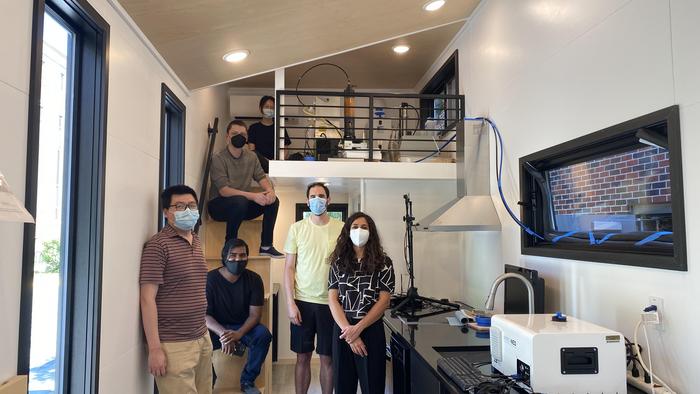A study quantifies the emission of extremely tiny particles by gas stoves and finds that the particles could harm human health. Airborne nanoparticles between 1–3 nm, referred to as nanocluster aerosol or NCA, are known to be bioactive and toxic, but measuring such minute particles has been a challenge. Brandon E. Boor and colleagues measured indoor NCA during propane gas cooking in the Purdue zero Energy Design Guidance for Engineers (zEDGE) test house using a novel instrument. Combining measurement data with the general dynamic equation for aerosols, the authors were able to characterize the production and behavior of the extremely tiny particles during cooking operations such as boiling water and cooking grilled cheese sandwiches. These activities emitted as much as ~1016 NCA/kg of cooking fuel, which is as much as or more NCA than produced by vehicles with internal combustion engines. The air around the stove often had higher concentrations of NCA than urban outdoor air. NCA formed during cooking is inhaled by humans and is delivered to the head airways and tracheobronchial region in large amounts, which is concerning, as flame-generated NCA is known to be toxic. According to the authors, indoor NCA should be considered a distinct air pollution category and should be routinely monitored.

Credit: Brandon E. Boor
A study quantifies the emission of extremely tiny particles by gas stoves and finds that the particles could harm human health. Airborne nanoparticles between 1–3 nm, referred to as nanocluster aerosol or NCA, are known to be bioactive and toxic, but measuring such minute particles has been a challenge. Brandon E. Boor and colleagues measured indoor NCA during propane gas cooking in the Purdue zero Energy Design Guidance for Engineers (zEDGE) test house using a novel instrument. Combining measurement data with the general dynamic equation for aerosols, the authors were able to characterize the production and behavior of the extremely tiny particles during cooking operations such as boiling water and cooking grilled cheese sandwiches. These activities emitted as much as ~1016 NCA/kg of cooking fuel, which is as much as or more NCA than produced by vehicles with internal combustion engines. The air around the stove often had higher concentrations of NCA than urban outdoor air. NCA formed during cooking is inhaled by humans and is delivered to the head airways and tracheobronchial region in large amounts, which is concerning, as flame-generated NCA is known to be toxic. According to the authors, indoor NCA should be considered a distinct air pollution category and should be routinely monitored.
Journal
PNAS Nexus
Article Title
Dynamics of nanocluster aerosol in the indoor atmosphere during gas cooking
Article Publication Date
27-Feb-2024
COI Statement
G.S. is a full-time employee of GRIMM Aerosol Technik Ainring GmbH & Co. KG, which has a potential direct or indirect financial interest in the subject matter discussed in the manuscript. C.K. is a full-time employee of DURAG Inc., which has a potential direct or indirect financial interest in the subject matter discussed in the manuscript.




